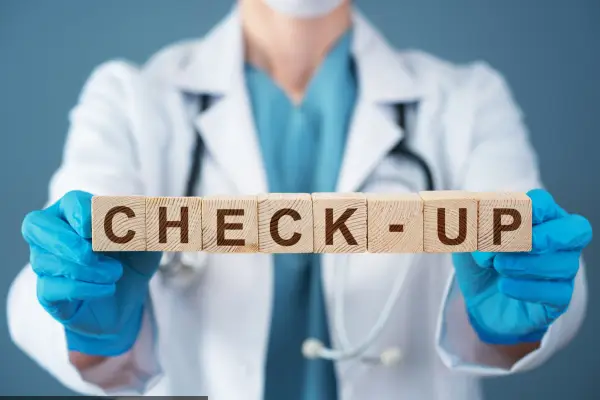Table of Contents
The Importance of Regular Health Screenings
Regular health screenings are crucial for maintaining overall health and preventing the onset of serious diseases. Health screenings allow individuals to detect potential health issues early, often before symptoms even appear, which can significantly improve treatment outcomes. This proactive approach is vital for identifying conditions like high blood pressure, diabetes, and various cancers early on. When it comes to sexually transmitted diseases (STDs), regular screenings become even more critical, as many STDs can be asymptomatic, meaning individuals may unknowingly spread infections to others. By incorporating regular health screenings, including rapid STD testing, into your routine, you are taking an essential step toward protecting both your health and the health of those around you.
- Early Detection: Regular health screenings, including rapid STD tests, enable early detection of diseases, allowing for timely intervention and treatment. This is particularly important for STDs, where early treatment can prevent complications such as infertility or chronic pain. Early detection also means that less invasive treatments may be required, reducing the overall impact on your life.
- Preventive Care: Health screenings are a form of preventive care, helping to identify risk factors and conditions that may develop into more severe health issues if left unchecked. For example, detecting high cholesterol early through a screening can lead to lifestyle changes that may prevent heart disease. Similarly, early detection of an STD can prevent the spread of the infection to others and allow for faster, more effective treatment.
- Peace of Mind: Regular health screenings can provide peace of mind, especially when results are negative. Knowing that you are in good health allows you to focus on maintaining a healthy lifestyle without the anxiety of unknown health issues. For those who test positive for a condition, it can also provide a clear path forward, with guidance on treatment and management.
Health screenings are not only about detecting diseases but also about maintaining a baseline of your overall health. By keeping track of your health through regular screenings, you can monitor changes over time, making it easier to identify when something is wrong. Additionally, regular screenings encourage individuals to engage more actively in their health care, leading to better health outcomes overall. Therefore, whether it’s an annual check-up or a routine rapid STD test, making health screenings a part of your wellness routine is an essential aspect of maintaining long-term health and well-being.

Understanding Rapid STD Testing: How It Works
Rapid STD testing is a convenient and efficient way to get tested for sexually transmitted diseases. Unlike traditional STD testing methods, which may take several days to return results, rapid STD testing provides results within minutes or a few hours. This speed is crucial for individuals who need quick answers, either due to a recent exposure or because they are starting a new relationship and want to ensure their health status. Understanding how rapid STD testing works can help you make informed decisions about your sexual health and encourage more people to get tested regularly.
- Testing Process: Rapid STD testing typically involves a simple procedure, such as a swab, blood sample, or urine sample, depending on the type of STD being tested for. The sample is then analyzed using advanced technology that can quickly detect the presence of bacteria, viruses, or antibodies associated with STDs. Because the process is streamlined, the turnaround time for results is significantly reduced compared to traditional testing methods.
- Types of Tests Available: There are various types of rapid STD tests available, each designed to detect specific infections. For example, rapid tests are available for HIV, syphilis, gonorrhea, and chlamydia. Some tests can detect multiple infections from a single sample, making the testing process even more convenient. It’s important to note that while rapid tests are highly accurate, follow-up testing with a healthcare provider may be recommended if the results are positive.
- Convenience and Accessibility: One of the main advantages of rapid STD testing is its convenience. Many clinics and testing centers offer walk-in services, allowing you to get tested without an appointment. Additionally, the fast turnaround time for results means you can get the information you need without a long wait, reducing anxiety and allowing for quicker decision-making regarding treatment or safe sexual practices.
Rapid STD testing is a valuable tool in the fight against sexually transmitted diseases, providing quick and reliable results that help individuals take control of their sexual health. The accessibility and speed of rapid testing can also help reduce the stigma associated with getting tested, as it allows for more privacy and less waiting time. By choosing rapid STD testing, you are making a responsible choice for your health and the health of your partners, ensuring that you can take appropriate action based on your test results.

The Role of Rapid STD Testing in Public Health
Rapid STD testing plays a crucial role in public health by helping to prevent the spread of sexually transmitted infections (STIs) and reducing the overall burden of these diseases on society. STDs are a significant public health issue, with millions of new cases reported each year. The ability to quickly diagnose and treat STDs through rapid testing is essential for controlling outbreaks, reducing transmission rates, and ensuring that individuals receive the care they need. By understanding the impact of rapid STD testing on public health, we can appreciate its importance in maintaining the health of communities and populations.
- Reducing Transmission Rates: One of the key benefits of rapid STD testing is its ability to reduce the transmission of STDs. When individuals are tested and receive their results quickly, they can take immediate action, such as informing partners, seeking treatment, and adopting safer sexual practices. This quick response helps to break the chain of transmission, preventing the spread of infections to others. In communities with high rates of STDs, widespread use of rapid testing can lead to a significant decrease in new infections.
- Supporting Public Health Initiatives: Rapid STD testing supports public health initiatives aimed at reducing the prevalence of STDs. Public health campaigns often encourage regular testing as a way to detect and treat STDs early, which is critical for controlling outbreaks and preventing long-term health complications. Rapid testing aligns with these goals by making it easier for individuals to get tested and receive results quickly, increasing the likelihood that they will follow through with testing and treatment.
- Addressing Health Disparities: Rapid STD testing can also help address health disparities by providing accessible testing options to underserved populations. In many communities, access to healthcare can be limited, making it difficult for individuals to get tested for STDs. Rapid testing can be offered in a variety of settings, including community centers, mobile clinics, and outreach programs, ensuring that more people have access to the testing and care they need. By expanding access to rapid testing, public health organizations can help reduce the incidence of STDs in vulnerable populations and promote health equity.
The role of rapid STD testing in public health cannot be overstated. It is a critical tool for controlling the spread of STDs, supporting public health initiatives, and addressing health disparities. By promoting regular testing and making rapid testing more accessible, we can work towards reducing the overall burden of STDs on society and improving the health and well-being of individuals and communities. Ultimately, rapid STD testing is not just about individual health; it is about protecting the health of the entire population and ensuring a healthier future for everyone.
Benefits of Regular Rapid STD Testing for Sexual Health
Regular rapid STD testing is essential for maintaining good sexual health and preventing the spread of sexually transmitted infections. Sexual health is a vital aspect of overall well-being, and taking proactive steps to protect it should be a priority for everyone. Regular testing, particularly with the convenience of rapid testing, offers numerous benefits that can help you stay healthy, make informed decisions, and maintain a positive and safe sexual life. Understanding these benefits can encourage more people to get tested regularly and take charge of their sexual health.
- Peace of Mind: Regular testing provides peace of mind, especially in a world where many STDs are asymptomatic. Knowing your status allows you to make informed decisions about your sexual relationships and take appropriate precautions to protect both yourself and your partners. The quick results provided by rapid STD testing mean you don’t have to wait long to get this peace of mind.
- Early Detection and Treatment: Regular rapid STD testing allows for early detection of infections, which is crucial for effective treatment. Many STDs, if left untreated, can lead to serious health complications such as infertility, chronic pain, or an increased risk of contracting other infections, including HIV. Early detection through regular testing means you can start treatment promptly, reducing the risk of long-term health issues.
- Responsible Sexual Behavior: Regular testing promotes responsible sexual behavior. By knowing your status and the status of your partners, you can engage in safer sexual practices, reducing the risk of spreading infections. This responsible approach to sexual health not only protects you but also contributes to the overall health of your community by reducing the spread of STDs.
- Convenience and Accessibility: The availability of rapid STD testing makes it easier than ever to incorporate regular testing into your routine. The quick and convenient nature of these tests means you can get tested without the need for lengthy appointments or waiting for results. This accessibility is particularly important for people with busy schedules or those who may feel anxious about the testing process.
Incorporating regular rapid STD testing into your sexual health routine is a proactive and responsible choice that can have far-reaching benefits. By staying informed about your sexual health, you can protect yourself, your partners, and your community from the spread of sexually transmitted infections. Regular testing, combined with open communication with partners and the use of protection, is the best way to maintain a healthy and fulfilling sexual life. In conclusion, the benefits of regular rapid STD testing are clear: peace of mind, early detection, responsible behavior, and convenience, all of which contribute to a healthier you.

The Importance of Partner Communication and Rapid STD Testing
Open and honest communication with your partner about sexual health and rapid STD testing is essential for maintaining a healthy relationship and protecting both partners from sexually transmitted infections. Unfortunately, discussing sexual health and STD testing can be uncomfortable for many people, leading to misunderstandings, assumptions, and potential risks. However, by prioritizing communication and making rapid STD testing a routine part of your relationship, you can build trust, enhance intimacy, and ensure that both you and your partner are taking the necessary steps to protect your health.
- Building Trust: Discussing sexual health and STD testing with your partner is a crucial step in building trust. When both partners are open about their health status and the steps they are taking to protect each other, it fosters a sense of security and mutual respect in the relationship. Trust is the foundation of any healthy relationship, and being honest about sexual health is an important aspect of that trust.
- Enhancing Intimacy: Open communication about sexual health can enhance intimacy in your relationship. When both partners feel safe and confident that they are taking steps to protect their health, it can lead to a more fulfilling and connected sexual relationship. Discussing and agreeing on the importance of regular rapid STD testing shows that you care about each other’s well-being, which can strengthen the emotional bond between you.
- Reducing Risk: One of the most important reasons to discuss rapid STD testing with your partner is to reduce the risk of transmitting infections. By getting tested regularly and sharing your results with your partner, you can make informed decisions about your sexual practices and take appropriate precautions. This proactive approach helps to protect both partners from potential infections and ensures that any infections that are present are detected and treated early.
- Overcoming Stigma: While it can be challenging to talk about sexual health and STD testing, overcoming the stigma associated with these topics is crucial. Many people avoid discussing STD testing with their partners because they fear judgment or rejection. However, by normalizing these conversations, you can help break down the barriers that prevent people from getting tested and taking control of their sexual health.
Prioritizing communication about sexual health and rapid STD testing in your relationship is a key step in maintaining a healthy, trusting, and intimate connection with your partner. It’s important to approach these conversations with honesty, empathy, and a shared commitment to protecting each other’s health. By making rapid STD testing a routine part of your relationship, you are taking an active role in ensuring that both you and your partner can enjoy a safe and fulfilling sexual relationship. Remember, discussing sexual health is not just about avoiding risks; it’s about building a strong foundation for a healthy and lasting relationship.
Addressing the Stigma Around Rapid STD Testing
Stigma surrounding STD testing, including rapid STD testing, remains a significant barrier to people seeking the care they need. Despite the availability of quick and convenient testing options, many individuals avoid getting tested due to fear of judgment, shame, or misconceptions about what testing implies. Addressing this stigma is essential to encourage more people to take control of their sexual health and normalize the process of getting tested. By understanding the sources of stigma and how to overcome them, we can create a more supportive environment where everyone feels comfortable prioritizing their health.
- Misconceptions and Fear: One of the main sources of stigma around STD testing is the misconception that getting tested implies promiscuity or irresponsible behavior. This fear of being judged by others can prevent individuals from seeking testing, even when they know it is necessary for their health. In reality, getting tested is a responsible and proactive step that shows a commitment to one’s health and the health of others. Educating people about the importance of regular testing and challenging these misconceptions can help reduce stigma.
- Cultural and Social Norms: In many cultures and communities, discussions about sexual health are taboo, making it difficult for individuals to seek testing or talk openly about their health. These cultural norms can perpetuate the stigma associated with STD testing, leading to a lack of awareness and access to testing services. By promoting open dialogue about sexual health and encouraging communities to support regular testing, we can work towards breaking down these barriers and creating a more accepting environment.
- Anonymity and Privacy Concerns: Privacy concerns also contribute to the stigma around STD testing. Many people fear that getting tested will expose their sexual history or lead to unwanted attention. Rapid STD testing can help address these concerns by offering quick, private, and discreet testing options. Many testing centers provide confidential services, ensuring that individuals can get tested without fear of their information being shared.
- Promoting Positive Messaging: One way to combat the stigma around rapid STD testing is to promote positive messaging that emphasizes the importance of self-care and responsibility. Instead of framing testing as something to be ashamed of, it should be presented as a routine part of maintaining good health, similar to other health screenings. By changing the narrative around testing, we can help reduce the shame and embarrassment that often prevent people from getting tested.
Addressing the stigma around rapid STD testing is crucial for improving public health and encouraging more people to take control of their sexual health. By challenging misconceptions, promoting open communication, ensuring privacy, and emphasizing the importance of regular testing, we can create a more supportive environment where everyone feels empowered to prioritize their health. Reducing stigma is not just about changing individual attitudes; it’s about creating a cultural shift that normalizes testing and makes it a routine part of maintaining overall health and well-being.










